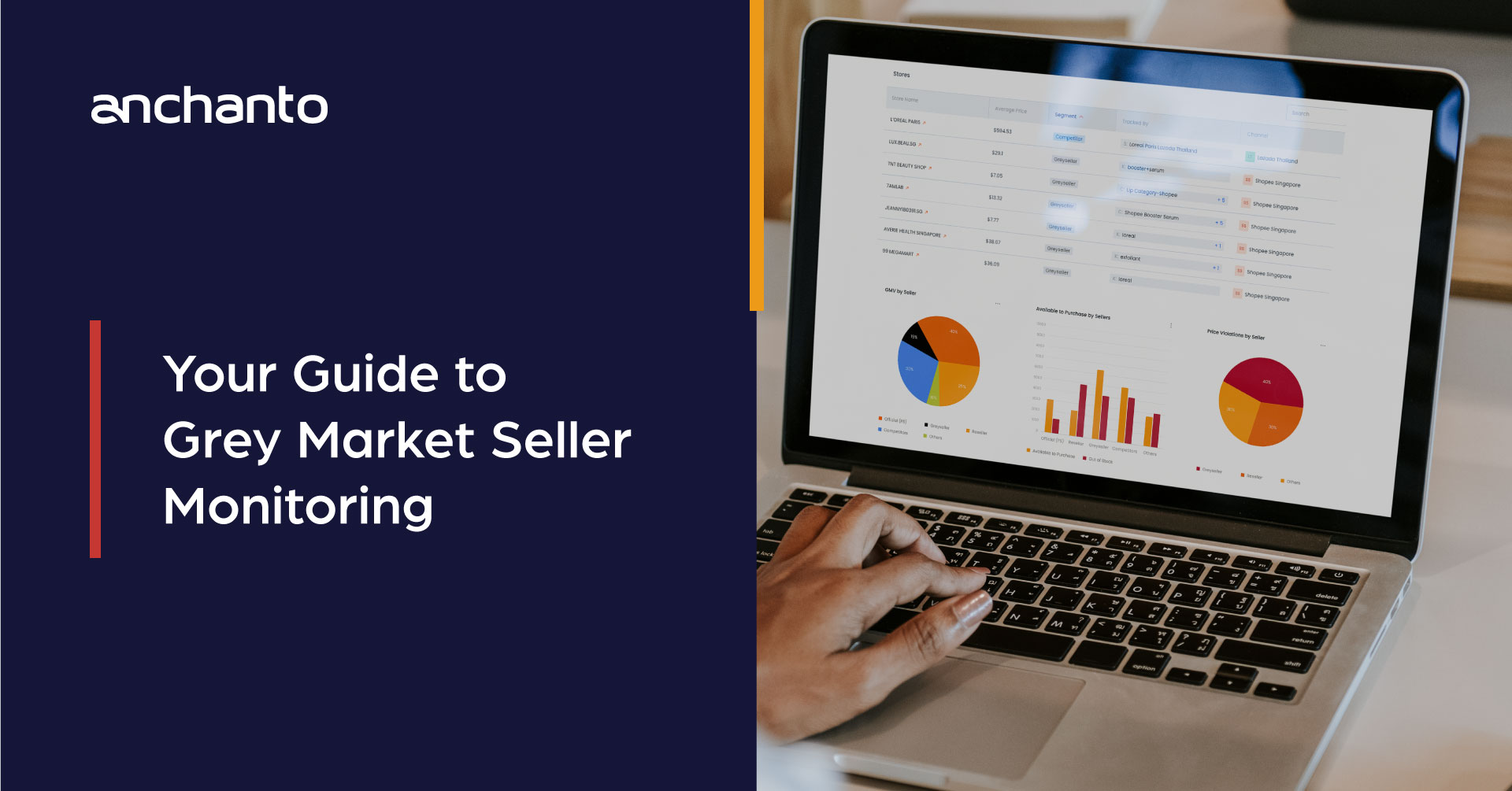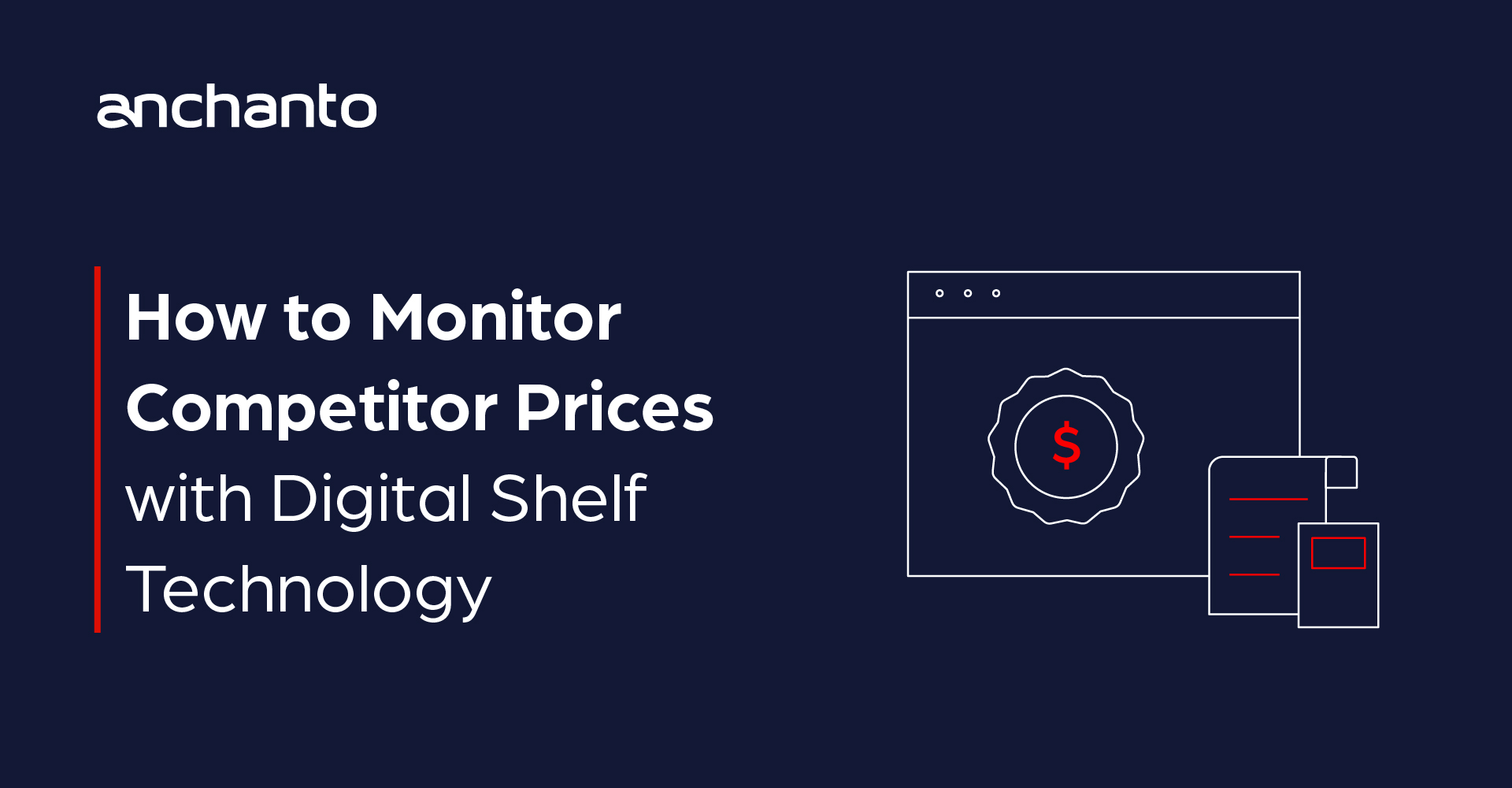
Protecting Your Brand: The Ultimate Guide to Grey Market Seller Monitoring
As a brand, you and your team spend endless hours building an identity, positioning your products in the market and promoting their value. But it only takes a short time for unauthorized online sellers to damage your reputation and threaten your profitability.
According to a news report by the Financial Times [1], Watches of Switzerland, an authorized dealer of a luxury brand of watches, sells their leading automatic watch in rose gold for £42,600, but the same watch is on offer in the “grey market” of unauthorized sales — from a US dealer, Watch My Diamonds, for $34,850 (£27,227).
Like in the above example, some brands may not have acquired legal permission to sell their brand in certain countries, but unauthorized sellers may be selling them there. This could lead to legal issues for the brand.
The rapid increase of grey market sellers [2] on e-commerce channels since 2016, is a growing concern that many brands struggle with today. And given the vast landscape of the e-commerce market, it’s not easy to shut down grey sellers completely.
In this ultimate guide, we will explore the nitty-gritty of grey market seller monitoring and how you can safeguard your brand. From understanding what grey market sellers are to identifying the risks they pose, we will provide you with actionable steps to combat this issue effectively.
We will delve into the following topics as you read through this guide:
- The Impact of Grey Market Sellers on Brands and Sales
- Grey Market Monitoring: Why it is Important
- Tools and Technologies for Grey Market Monitoring
- Creating a Grey Market Monitoring Strategy
- Identifying and Tracking Grey Market Sellers
- Conclusion: Taking Action to Protect Your Brand and Boost Sales
By the end of this guide, you will have a comprehensive understanding of grey market seller monitoring and knowledge to protect your brand and boost your sales. Let’s dive in and take control of your brand’s digital ecosystem.
The Impact of Grey Market Sellers on Brands and Sales
Grey market [3] sellers are those individuals or businesses that sell new products outside of a company’s authorized distribution channels. A very common way for this type of retail to take place is when distributors resell brand-name products to unauthorized businesses.
Unauthorized sellers can have a significant impact on brands and their e-commerce sales as they may sell a brands’ products at lower prices than authorized retailers. This can lead to several negative consequences for brands:
- Firstly, grey market sellers can erode brand integrity. When unauthorized sellers flood the market with products, it dilutes the exclusivity and value associated with the brand. Customers may start questioning the authenticity and quality of the products, leading to a decline in trust and loyalty.
- Secondly, grey market sellers can negatively impact customer experience. If customers receive substandard products from unauthorized sellers, they are likely to associate the negative experience with the brand itself. This can result in negative reviews, customer complaints, and a tarnished brand image, which can be challenging to recover from.
- Thirdly, grey market sellers can undercut authorized retailers. By offering products at lower prices, they create price disparities that can harm the relationship between the brand and its authorized partners. Authorized retailers may face difficulties competing with the lower prices offered by grey market sellers, leading to a decline in their sales and profitability.
To protect your brand and boost sales, it is essential to have a comprehensive grey market sellers monitoring strategy in place. Let’s explore why it is important.
Grey Market Monitoring: Why it is Important
Grey market monitoring is crucial for several reasons. Once these unauthorized sellers are identified, proactive measures must be taken to minimize their impact. By monitoring the market closely, you can stay ahead of grey market sellers and prevent them from gaining a foothold in your brand’s ecosystem.
Grey market seller monitoring also helps you maintain control over pricing and distribution channels. By identifying unauthorized sellers and their pricing strategies, you can take corrective actions to ensure consistency and fairness across all sales channels. This allows you to protect the relationship with your authorized retailers and maintain a level playing field.
Monitor grey market sellers with Anchanto!
To achieve effective grey seller market monitoring, regular monitoring is a crucial aspect to include in your comprehensive strategy. Real-time monitoring aids you to swiftly respond to emerging threats and adapt your strategy.
Let’s explore the tools and technologies that can help you effectively monitor the grey market.
Tools and Technologies for Grey Market Monitoring
To effectively monitor the grey market, you need the right tools and technologies. These tools should help you track unauthorized sellers, identify pricing disparities, and gather valuable data to inform your decision-making. Based on these requirements, here are some essential tools and technologies to consider:
1. Marketplace monitoring software: It allows you to monitor your and your competitors’ (including grey market seller’s) products across online marketplaces. This will help you to keep tabs on their product catalogs and content and also gather insights into their online sales activities. With accurate information from marketplace monitoring software, you can take proactive steps to combat grey market sellers.
2. Customer sentiment analytics: This piece of software gathers reviews and ratings from various e-commerce platforms related to your brand’s products. This information provides valuable insights into customer sentiment and market trends so you know what your customers think and feel about your offerings. You can also segregate this information based on third-party sellers to identify grey sellers and the impact they have on your customers.
3. Price tracking software: Price tracking software enables you to monitor pricing disparities across different sales channels. By tracking the prices offered by authorized retailers and comparing them to those offered by grey market sellers, you can identify instances of undercutting and take appropriate action. Minimum Advertised Price can be monitored across your grey sellers to flag defaulters and report them.
4. Performance measuring software: Besides measuring your sales performance also track your grey sellers’ performance. With the right performance measuring software, you can track unauthorized seller performance based on a product level and determine the market share they are taking from you.
Implementing these tools and technologies can reverse the impact of grey market seller efforts and help you regain your market share. However, it is essential to create a well-defined strategy to ensure maximum effectiveness. Let’s explore how to create a grey market monitoring strategy.
Creating a Grey Market Monitoring Strategy
With a well-defined strategy for effective grey market monitoring, you can effectively navigate the complexities of the grey market landscape. What grey sellers are planning will no longer be a mystery and neither will they be able to hide in plain sight. In this section, we’ll delve into the key components to consider when formulating your comprehensive grey market monitoring strategy.
1. Define your monitoring goals: Start by defining your objectives. What do you want to achieve through grey market monitoring? Is it to measure their impact on your business, check their product catalogs, protect your brand reputation, or minimize pricing disparities? Clearly defining your goals will help you prioritize your efforts and allocate resources effectively.
2. Identify key monitoring channels: Determine the channels where grey market sellers are the most active. This could be online marketplaces like – Lazada, Shopee, Amazon, Zalora, Etsy, eBay, Shopify…, social media platforms like TikTok Shop, or specific webstores. By determining which channels to focus on, you can maximize the impact of your monitoring efforts.
3. Set up monitoring tools and technologies: Implement the tools and technologies discussed earlier to monitor all e-commerce sales channels and determine what your grey sellers are up to. The software you choose should gather and analyze data about these unauthorized sellers so you can gauge their performance, prices, and market share.
<CTA button/ link to book a Digital shelf demo>
4. Establish enforcement actions: Define a set of actions to take when unauthorized sellers are identified. This could involve sending cease-and-desist letters, filing legal complaints, or working with e-commerce platforms to remove listings. Having a clear plan of action will enable you to respond swiftly and effectively.
5. Monitor and analyze data: Continuously monitor the data you collect and look for trends, patterns, and anomalies into the activities of grey market sellers. Regular analysis of unauthorized seller data can help you change your strategy and stand apart from these sellers.
By following these steps, you can create a robust grey market monitoring strategy that aligns with your brand’s goals and objectives.
Conclusion: Taking Action to Protect Your Brand and Boost Sales
Grey market sellers pose a significant threat to brand integrity and profitability. However, by implementing a robust grey market sellers monitoring strategy, you can take control of your brand’s digital ecosystem. From understanding the impact of grey market sellers to tracking them, this guide has provided you with actionable steps to combat this issue effectively.
Remember to leverage the right tools and technologies such as Anchanto Digital Shelf, to support a well-defined monitoring strategy. By doing so, you can protect your brand’s reputation, maintain pricing consistency, and maximize your sales and profitability.
Take action today and safeguard your brand from the detrimental effects of grey market sellers. Boost your sales and maintain a strong brand presence in the digital marketplace with Anchanto Digital Shelf.
Monitor your potential grey market sellers with Anchanto!
References –
[1] – ft.com – The billion-dollar grey market in watches upsets big brands
[2] – Researchgate.net – An Empirical Investigation of Online Gray Markets
[3] – Indeed.com – Gray Market: Definition, Characteristics and Prevention

